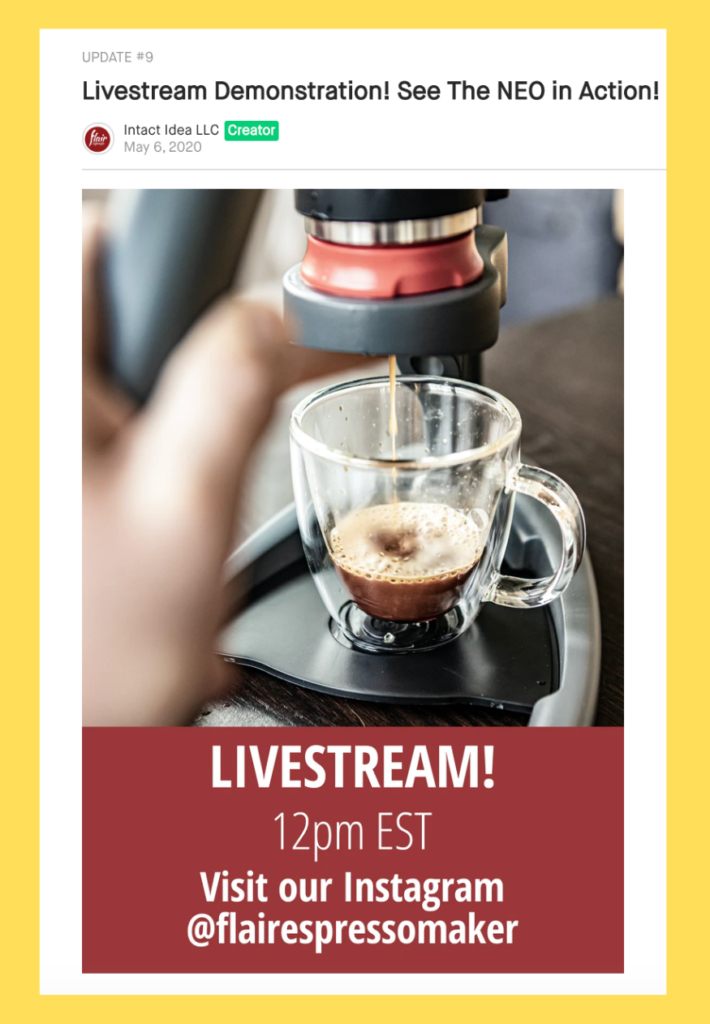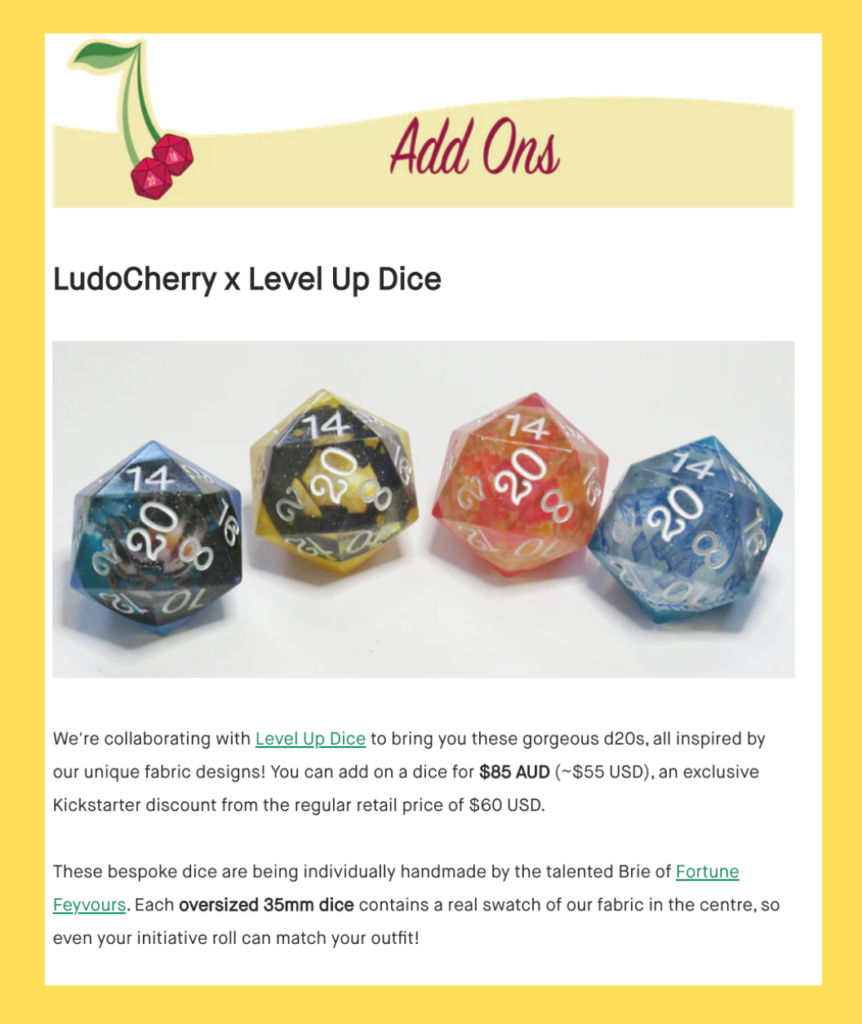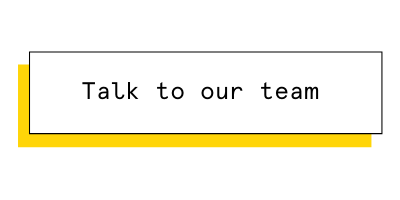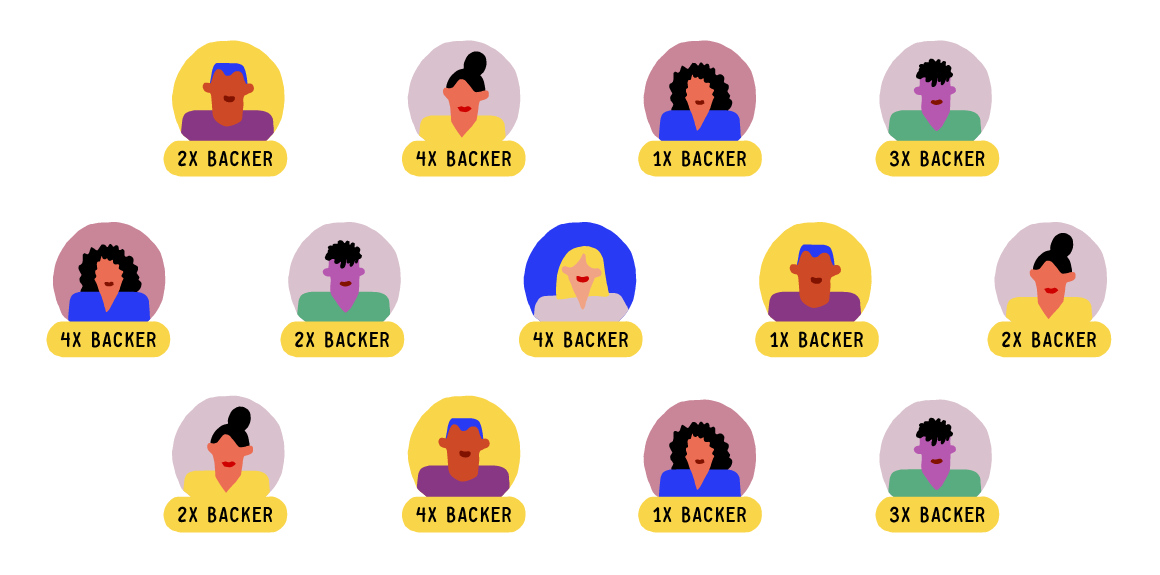Repeat backers can give your campaign the boost it needs to reach its funding goal early. But how do you build a community that’s willing to support you time and time again? Aside from consistently creating exciting projects, all of the top creators focus on providing an excellent backer experience. Here’s how to get started:
What is backer experience and why is it so important?
Backer experience — just like general customer experience — is defined by all of the interactions backers have with you throughout your campaign. If you want to build long-term value with your campaign, you have to be intentional about how you connect with your backers. The way you communicate, support, and engage them impacts their perception of you and their desire to pledge to your next campaign. Even if someone ultimately likes the product that you ship, any negative experiences along the way could discourage them from supporting you in the future.
So how can you get Kickstarter backers from past campaigns to pledge to your next campaign? As a creator, you should always be thinking of ways to make your backers happy. How can you keep them informed? How can you make processes easier for them? How can you delight them? Ask yourself these questions at every step of your campaign, and you will be on track to providing backers with an experience that keeps them coming back for more.
A happy backer is more likely to turn into a repeat backer, and repeat Indiegogo or Kickstarter backers make your job easier. Not only can you reach your funding goal quicker with a bunch of enthusiastic fans ready to pledge on day one, but serial Kickstarter backers can be advocates, helping you promote your projects to their friends and families. It can be hard to get Kickstarter backers. But with a strong community of engaged fans, you won’t have to spend as much time or money marketing your project. Consumer statistics show that it costs five times more to acquire new customers than it does to retain a current customer.
4 experience-boosting practices to get repeat Kickstarter backers
1. Post regular updates
You’re likely already posting project updates. But it’s important to make sure that you’re doing this consistently. We recommend that you make an update at least every two weeks, even if much hasn’t changed. Posting regular updates keeps your backers in the loop throughout your campaign and makes them feel connected to you and your project. To turn first-time backers into serial Kickstarter backers, you need to nurture your relationships, and keeping in touch is a great way to do this.
If you’re running into problems — perhaps there will be a delay in shipping or maybe there’s an issue with your manufacturer — it’s particularly important to post updates. Let’s say your timeline has changed. If you aren’t communicating with your backers, they could lose trust in you. They may even start questioning the legitimacy of your project. So if there are any issues, explain what’s going on, and let people know how you’re addressing the matter.
When things are going well, there’s still an opportunity to make a project update. Give backers a behind-the-scenes look at what you’re doing, introduce them to your team, or share more of your personal story. In this update for the NEO Espresso Maker, the creators invite backers to see their product in action.

People will feel more invested in your projects and your success if you include them in your journey.
2. Keep backers excited
Add fun incentives to your campaign once you’ve launched to get Kickstarter backers excited. For example, if you’ve reached your funding goal, or you’re on track to reach it, consider adding stretch goals. A stretch goal is a funding target beyond your original goal that can help you raise money to enhance your product and offer additional value to backers.
Tapeworm, a Kickstarter project that was funded in four minutes, had a series of stretch goals to keep the momentum of the campaign going and give backers something cool for their continued support.

Some creators will roll out stretch goals while their project is live. So they might have stretch goals that they know they’re going to blow past, and then have another set of secret stretch goals that they’re prepared to roll out as the campaign continues to raise more money. This can incentivize backers in a lower pledge level to upgrade if the pledge level they are in doesn’t include stretch goals.
Remember, if you do add stretch goals, make sure that you have the ability to create and deliver them — you don’t want your attempt to please your backers to backfire.
Another way to offer more value to backers is through add-ons — à la carte items that Indiegogo and Kickstarter backers can purchase in addition to the items they receive through their pledges. Add-ons enable backers to get exactly what they want by customizing rewards and receive more cool stuff from you.
The people who backed LudoCherry’s tabletop clothes campaign had the option of purchasing a few different add-ons, including bespoke dice.

You can also set up add-on stretch goals through BackerKit if you didn’t hit a stretch goal during your campaign.
The best thing about stretch goals and add-ons is that you’ll be able to keep your backers excited while earning additional funds.
3. Reduce obstacles
Put yourself in your backers’ shoes. What might they find frustrating? First, think about your campaign page. Is it easy to understand? Does it highlight all of the key features of your product? During your campaign, you want all of your messaging to be as clear as possible to eliminate any barriers to pledging.
Consider the fulfillment stage of your campaign. How will you keep backers updated on your progress? How will they know when their rewards are shipping? Is there an easy way for them to update their shipping information? Post-campaign, a pledge manager like BackerKit not only lets your backers update their survey responses and orders on their own, but also helps you stay organized.
No one wants to deal with processes or messaging that’s confusing. And you certainly don’t want to launch a sloppy campaign. Part of delighting backers is thinking about how you can simplify every step of their journey.
4. Support your backers
Backers will likely have questions and feedback. It’s up to you to respond to them in a professional and timely manner. Of course, this can be a challenge when you’re balancing all the demands of running a campaign, but support will need to be prioritized if you want to keep backers happy.
Supporting your backers doesn’t have to be overwhelming. You can make this process run as smoothly as possible by centralizing communication. Direct backers to one channel or platform for support, so you aren’t fielding questions from multiple places.
There are also a few ways to minimize the number of questions you have to field. As mentioned earlier, regular project updates and making sure your campaign page is easy to understand may take care of some backer queries. The key is to manage expectations.
That being said, even a well-planned campaign is bound to have a few unexpected problems. During your campaign, you can look to the support content on Indiegogo or Kickstarter for help. If you’re using BackerKit to survey your backers, you can enable support, and the BackerKit team will handle questions for you.
Let’s say you have 1000 backers and 10% of them need help, that’s 100 people that you’re going to have to attend to on your own. It’s easier to balance all of your responsibilities, when you have a partner like BackerKit do the heavy lifting. Enabling BackerKit support, allows you streamline communications, as all backer emails from your survey go directly to a team of experts. Your dedicated BackerKit support lead will also review your survey before you send to make sure everything is in order. However, if you choose to handle post-campaign support on your own, BackerKit’s Help Center has answers to common backer queries.
Most people understand that problems may arise. It’s how you address those problems that will determine if backers continue their relationship with you.
Your backers should feel valued — your success depends on them. Even if you don’t plan to launch multiple campaigns, it’s important that you spend some time thinking about how you can improve their experience.
Contact our team to learn more about how BackerKit can help you build a community of happy backers.
